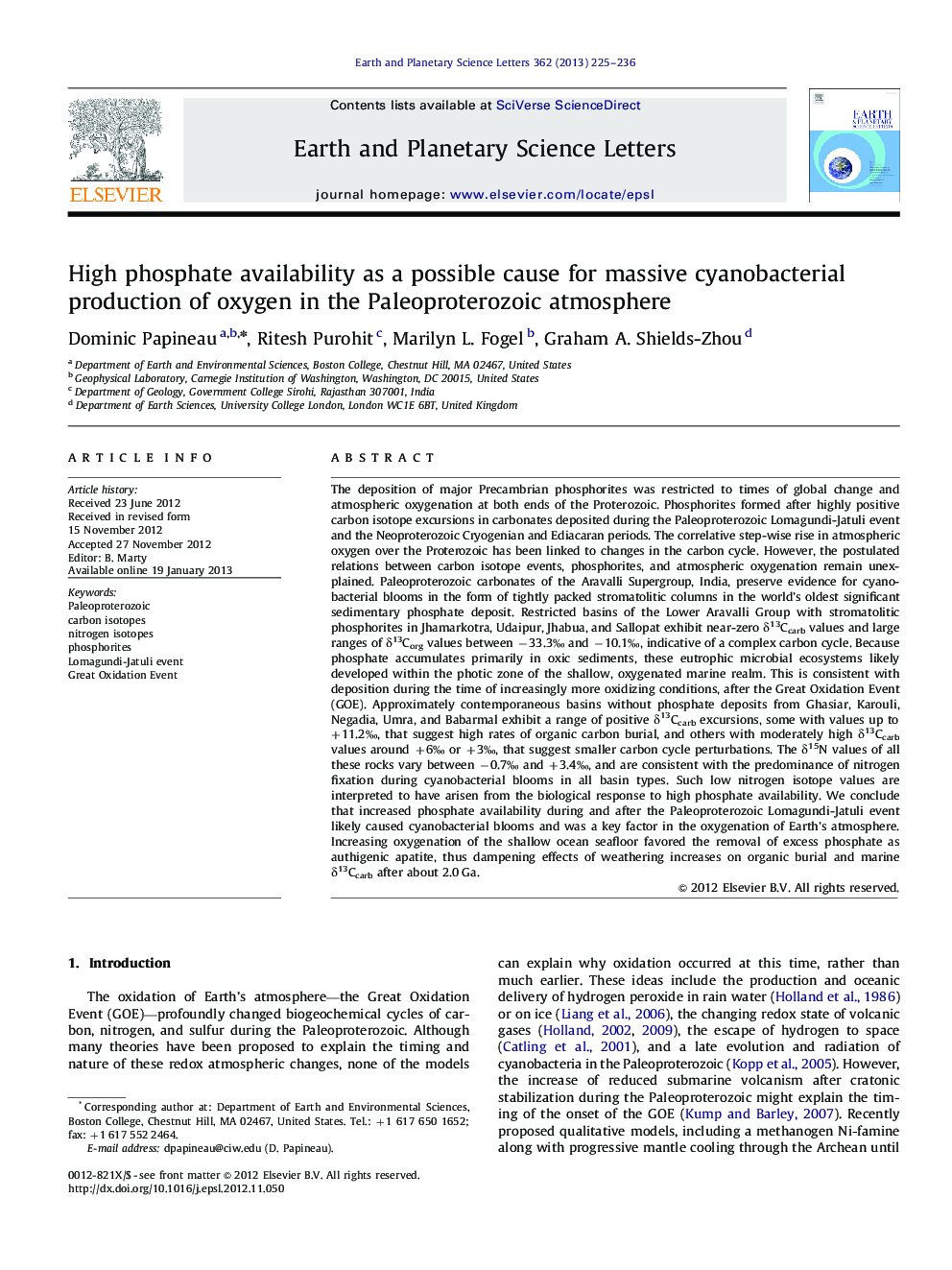| کد مقاله | کد نشریه | سال انتشار | مقاله انگلیسی | نسخه تمام متن |
|---|---|---|---|---|
| 4677261 | 1634791 | 2013 | 12 صفحه PDF | دانلود رایگان |
The deposition of major Precambrian phosphorites was restricted to times of global change and atmospheric oxygenation at both ends of the Proterozoic. Phosphorites formed after highly positive carbon isotope excursions in carbonates deposited during the Paleoproterozoic Lomagundi-Jatuli event and the Neoproterozoic Cryogenian and Ediacaran periods. The correlative step-wise rise in atmospheric oxygen over the Proterozoic has been linked to changes in the carbon cycle. However, the postulated relations between carbon isotope events, phosphorites, and atmospheric oxygenation remain unexplained. Paleoproterozoic carbonates of the Aravalli Supergroup, India, preserve evidence for cyanobacterial blooms in the form of tightly packed stromatolitic columns in the world's oldest significant sedimentary phosphate deposit. Restricted basins of the Lower Aravalli Group with stromatolitic phosphorites in Jhamarkotra, Udaipur, Jhabua, and Sallopat exhibit near-zero δ13Ccarb values and large ranges of δ13Corg values between −33.3‰ and −10.1‰, indicative of a complex carbon cycle. Because phosphate accumulates primarily in oxic sediments, these eutrophic microbial ecosystems likely developed within the photic zone of the shallow, oxygenated marine realm. This is consistent with deposition during the time of increasingly more oxidizing conditions, after the Great Oxidation Event (GOE). Approximately contemporaneous basins without phosphate deposits from Ghasiar, Karouli, Negadia, Umra, and Babarmal exhibit a range of positive δ13Ccarb excursions, some with values up to +11.2‰, that suggest high rates of organic carbon burial, and others with moderately high δ13Ccarb values around +6‰ or +3‰, that suggest smaller carbon cycle perturbations. The δ15N values of all these rocks vary between −0.7‰ and +3.4‰, and are consistent with the predominance of nitrogen fixation during cyanobacterial blooms in all basin types. Such low nitrogen isotope values are interpreted to have arisen from the biological response to high phosphate availability. We conclude that increased phosphate availability during and after the Paleoproterozoic Lomagundi-Jatuli event likely caused cyanobacterial blooms and was a key factor in the oxygenation of Earth's atmosphere. Increasing oxygenation of the shallow ocean seafloor favored the removal of excess phosphate as authigenic apatite, thus dampening effects of weathering increases on organic burial and marine δ13Ccarb after about 2.0 Ga.
► New geochemical data indicate high primary productivity in ∼2.0 Ga sediments.
► Aravalli basins with stromatolitic phosphorites have near-zero δ13Ccarb values.
► These also have large ranges of δ13Corg values between −33.3‰ and −10.1‰.
► In contemporaneous open-marine basins, a range of positive δ13Ccarb excursions occur.
► All δ15N values from all basins vary between −0.7‰ and +3.4‰.
Journal: Earth and Planetary Science Letters - Volume 362, 15 January 2013, Pages 225–236
